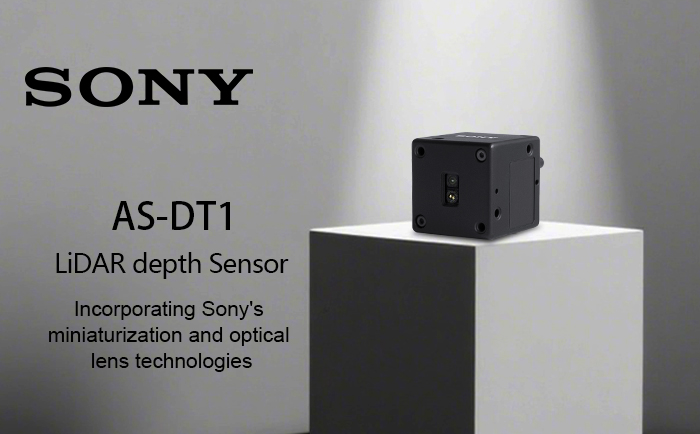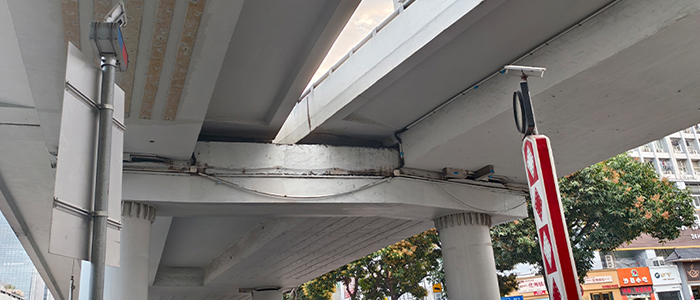AS a breakthrough product of SONY in the field of lidar, the AS-DT1 is redefining the industrial-grade 3D perception standard with its world’s smallest and lightest body design (29×29×31mm, 50g), ± 5-centimeter-level ranging accuracy, an ultra-long perception range of 40 meters indoors and 20 meters outdoors, and a breakthrough low-reflectivity object recognition capability.
The SONY AS-DT1 sensor not only integrates SONY’s technological accumulation in the fields of optical lenses and industrial camera modules, but also achieves a perfect balance between performance and size through the collaborative innovation of dToF (Direct Time-of-flight) technology and SPAD (Single Photon Avalanche Diode) sensors.

Ⅰ. Multi-industry perception expert
1. Robotics and automation field
Autonomous mobile robots (AMRs) : In the warehousing and logistics scenario, SONY’s AS-DT1 can build a three-dimensional environmental map in real time, accurately identify shelves, pallets and low-reflectivity packaging boxes, and achieve centimeter-level positioning and navigation. Its ability to resist environmental light interference ensures that the robot can operate stably in strong lighting environments.
Service robot: The restaurant food delivery robot can sense suspended tables and chairs AS well as dynamic pedestrians through SONY AS-DT1, achieving zero-contact obstacle avoidance. Medical delivery robots can accurately identify obstacles such as glass doors and transparent partitions that are difficult to detect with traditional sensors.
2. Unmanned Aerial Vehicle Application ecosystem
Infrastructure inspection: Inspection drones equipped with SONY AS-DT1 can conduct non-contact detection on bridge cracks, worn highway markings, and seepage points of DAMS. Their long-distance ranging capability reduces the need for manual intervention.
Topographic mapping and agricultural monitoring: In mapping scenarios, SONY AS-DT1 can generate high-precision 3D point cloud data, facilitating the construction of digital twin cities. Agricultural drones manage variable fertilization by sensing the differences in crop row spacing and soil moisture.

3. Intelligent transportation and Vehicle-road coordination
Autonomous driving environment perception: SONY AS-DT1 can be deployed in the forward perception system of autonomous driving vehicles, accurately identifying pedestrians, vehicles and traffic signs within a range of 20 meters. Its anti-strong light feature ensures the safety of tunnel entry and exit scenarios.
Vehicle-road coordination infrastructure: After integrating SONY AS-DT1 into the roadside unit, it can monitor the length of vehicle queues at intersections and the intentions of pedestrians crossing the street in real time, and optimize the timing of traffic lights.
4. Intelligent retail and warehousing
Dynamic inventory management: SONY A-DT1 can penetrate the shelf gaps and monitor the inventory depth of goods in real time. Its low reflectivity object recognition ability accurately distinguishes black packaging boxes from empty storage locations.
In unmanned retail scenarios: At self-checkout channels, sensors can penetrate shopping baskets to identify goods, reducing the risk of missed scans and misjudgments.
5. Construction and safety field
Structural health monitoring: Regularly scan the exterior walls of buildings and steel structure nodes, and warn of deformation trends through long-term data comparison.
Security inspection robot: In scenarios such AS substations and chemical plants, SONY AS-DT1 can penetrate pipe gaps to detect leakage points of equipment, and its aluminum alloy casing meets the explosion-proof grade requirements.
Ⅱ technological breakthroughs drive scene innovation
The core advantage of AS-DT1 lies in addressing three major industry pain points:
The ultimate balance of space and weight: With a weight of 50 grams, it can be seamlessly integrated into load-sensitive platforms such as rotorcraft drones and micro-robots, extending the device’s battery life.
Complex scene perception capability: The SPAD sensor has single-photon level sensitivity and can identify “blind spot” targets in traditional liDars such as transparent glass and dark pipes.
All-weather operation guarantee: In a strong light of 100,000 lux (equivalent to midday sunlight) or a low-light warehouse environment, the ranging accuracy remains stable, breaking through the environmental adaptability limitations of traditional ToF sensors.

Iii. Future Application Outlook
The launch of SONY’s AS-DT1 not only provides a lighter and more accurate depth perception solution for devices such AS drones and robots, but also brings new technological breakthroughs to fields such as infrastructure inspection, logistics distribution, and emergency rescue in the low-altitude economy. This sensor is reshaping the technological foundation of industrial automation and intelligent systems in the role of a “perception eye”.
 Sony FCB camera block
Sony FCB camera block